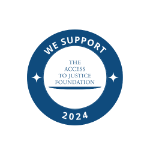April is International Caesarean Awareness Month which is dedicated to raising awareness about caesarean births, whether planned or unplanned, and promoting the importance of informed decision-making regarding birth options.
Around one in four pregnant women in the UK have a Caesarean (C-section) birth. A caesarean is a major operation where a cut is typically made across your stomach, just below your bikini line. It is usually only done if it is the safest option for you and your baby.
Why are caesareans carried out?
A caesarean may be recommended as a planned (elective) procedure or done in an emergency if a vaginal birth is considered to be too risky.
A caesarean may be carried out because:
- your baby is lying in the breech position (feet first or bottom first) and your doctor or midwife has been unable to turn them by applying gentle pressure to your stomach, or you would prefer they did not try this
- you have a low-lying placenta (placenta praevia)
- you have pregnancy-related high blood pressure (pre-eclampsia)
- you have an infection
- your baby is not getting enough oxygen and nutrients – sometimes this may mean the baby needs to be delivered immediately
- your labour is not progressing
- there is excessive vaginal bleeding
If there is time to plan the procedure, your midwife or doctor will discuss the benefits and risks of a caesarean compared with a vaginal birth.
You can ask for a caesarean
Some women choose to have a caesarean for non-medical reasons.
If you ask your midwife or doctor for a caesarean when there are not medical reasons, they should explain the overall benefits and risks of a caesarean to you and your baby compared with a vaginal birth.
If you are anxious about giving birth, you should be offered the chance to discuss your anxiety with a healthcare professional who can offer support during your pregnancy and labour.
If you still feel that a vaginal birth is not an acceptable option for you, you should be offered a planned caesarean. If your doctor is unwilling to perform the operation, they should refer you to a doctor who will.
Recovering from a caesarean
The average stay in hospital after a caesarean is around three to four days, but you may be allowed to go home sooner than this if both you and your baby are well. You may then need to avoid certain activities such as driving until you have had your postnatal check-up with the doctor at six weeks.
The wound in your stomach will eventually form a scar. This may be obvious at first, but it should fade with time.
Future pregnancies after a caesarean
If you have a baby by caesarean, it does not necessarily mean that any babies you have in the future will also have to be delivered this way.
Most women who have had a caesarean section can safely have a vaginal delivery for their next baby, known as vaginal birth after caesarean (VBAC). However, you may require additional monitoring during labour just to make sure everything is progressing well.
Some women may be advised to have another caesarean if they have another baby. This depends on whether a caesarean is still the safest option for them and their baby.
There is an ongoing need for education and advocacy around caesarean sections. If you have questions regarding your birth options, always speak with a healthcare professional.
"*" indicates required fields

 Back
Back
















